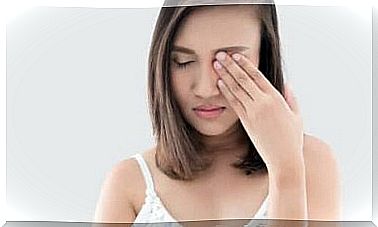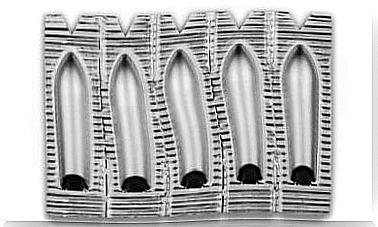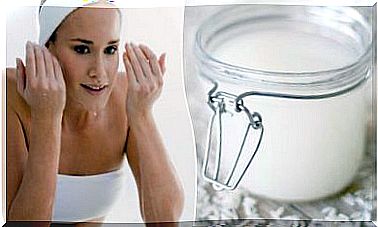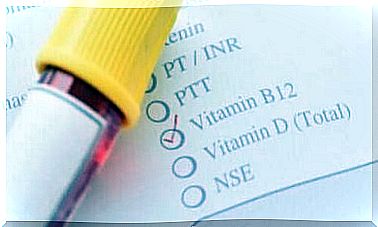Ankylosing Spondylitis: Diagnosis And Treatment
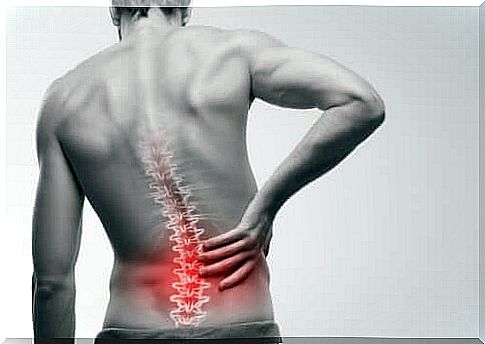
Ankylosing spondylitis is a chronic inflammatory disease that fundamentally affects spinal joints.
These joints tend to weld together, causing limited mobility. In this way, they make the spine less flexible. Therefore, it is very common to adopt a hunched forward posture.
It is not known exactly what causes this disease, but it is known that genetics plays an important role in its appearance. Most people who have ankylosing spondylitis have the HLA-B27 gene. However, only a few people with the gene develop the disease.
Symptoms of ankylosing spondylitis

This rheumatic disease produces flare-ups of inflammation in the spinal joints. Although inflammation may occur in other joints such as the shoulders, hips, knees and ankles.
The first symptoms of ankylosing spondylitis include nocturnal pain and stiffness in the lower spine. This can mainly occur in the morning and after periods of inactivity. Neck pain and tiredness are also frequent.
Some of the areas most commonly affected are the joint between the base of the spine and the pelvis and hips. However, it can also affect where tendons and ligaments join bones, especially in the spine.
When spondylitis occurs, new bone forms as part of the body’s attempt to heal itself. In this sense, the new bone closes the space between the vertebrae. In this way, a fusion between sections of one vertebra and another can occur.
These parts of the spine become rigid and inflexible. Fusion can also tighten the rib cage and reduce the capacity and function of the lungs.
Complications of ankylosing spondylitis
Some of the complications of ankylosing spondylitis:
- Eye inflammation ( uveitis): Uveitis is one of the most frequent complications of ankylosing spondylitis. May cause rapid onset of eye pain, light sensitivity and blurred vision.
- Damage to the heart valves: This disease can cause problems with the aorta. An inflamed aorta can affect the shape of the aortic valve in the heart, which will alter the function of the valve.
How can it be diagnosed?
There are some criteria for diagnosing ankylosing spondylitis that include:
- Clinical criteria: as low back pain for more than 3 months that improves with exercise but does not relieve with rest. In addition, the limitation of chest expansion is taken into account, as well as the mobility of the spine.
- Radiological criteria: what is the radiological evidence of sacroiliac joint inflammation.
Depending on the criteria presented to the patient, the diagnosis of ankylosing spondylitis will be:
- Defined: when there is a clinical and a radiological criterion.
- Probable: if the patient has 3 clinical or 1 radiological criteria.
Blood and urine tests can help support the diagnosis by the presence of the HLA-B27 antigen in the blood. Furthermore, it is possible to determine the greater or lesser intensity of the inflammatory process that the patient is suffering.
Treatment

Treatment combines different pharmacological options and rehabilitation.
- Non-steroidal anti-inflammatory drugs (NSAIDs) and analgesics: these are pharmacological treatments aimed at controlling pain and reducing or suppressing joint inflammation. In this way, the patient’s quality of life is improved. Also, by relieving discomfort, it will help improve nighttime rest.
- Disease-Modifying Drugs (FAD): These drugs act on the immune system.
- Biological drugs : these drugs, although they cannot cure, manage, in many patients, to control the patient’s symptoms.
- Rehabilitation: must be done continuously and combined with pharmacological treatments. Physical and breathing exercises improve spinal mobility and muscle strength.
- Surgery: Surgery is only used in some cases, particularly when joints are severely damaged and mobility has been lost.
By combining the possible treatments, it is possible to avoid stiffness and ankylosing. In addition, they can help prevent other disorders of muscle and locomotor function. On the other hand, it’s good to do exercises that strengthen the spine like swimming.
